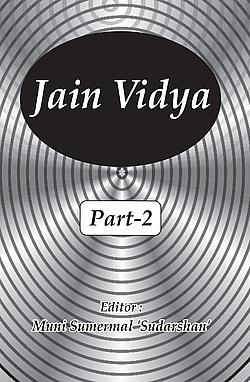(Code of Conduct in Terapanth)
| Rajendra- | The environment today is becoming highly vitiated. Discord in almost every home, disobedience towards elders, vicious mutual behaviour, discrimination etc. have already taken deep root. Not only the household society but some religious orders as well are also passing through the same situation. What is surprising is that those who embraced ascetic life by rejecting material comforts, worship and adoration, honour and dignity with the sole objective of spiritual practice are entangled in the clutches of conflicts. Devendrá! why is it happening so? |
| Devendrá- | Its real cause lies in disorder, mismanage-ment or false management and lack of discipline. The society, which is ruled by orderliness, compentence, discipline is far away from such polluted enviroment even today. You will be surprised to know of the special features of Terapanth Dharma Sangh. I have been in their contact for the last 4-5 years. Their model of organization, mutual pure affection, strict discipline, respect towards elders and a feeling of brotherhood among all have left great impression on my mind. Every aspect of their organizatonal structure has fascinated me. The rules of ethically restraint conduct formulated by their proceeding, Acharyas are unique. Just listen, I will tell you about some specific rules of moral conduct that bind them all together. Of these rules of moral conduct, most improtance has been given to gana (the spiritual order). They have a tradition of having one Acharya, who is solely responsible for its well- organized regulation. It is under his efficient supervision that the entire gana is managed. The Acharyas are chosen from the members of the gana itself. An acharya is selected and nominated task of his life and is the touchstone of acharya's compentence. Every monk or nun, particularly the Acharya, is fully responsible towards the gana. The acharya's order has to be obeyed without any hesitation. The staying of the monks and nuns at a particular place, their journeys and propagation of dharma at national and international level are all directed by the orders of the acharya. He also makes it obligatory for all ascetics to serve the ailing and old monks and nuns from time to time, prescribes punishment for the erring ascetics, and even expels a monk or nun who deviates from the ascetic code of conduct. It is only the acharya's prerogative to initiate a householder into ascetic life. Without his permission no monk or nun can initiate anyone. It is only the acharya who has disciples. No monk or nun can make his own desciple. No member of gana can condemn or speak ill of other members. If a monk or nun finds that a particular ascetic has made a mistake, it is his duty to first warn him and in case he doesn't behave, then he must report the matter to the Acharya. On the contrary, instead of reporting acharya, if one reveals it to others, he himself is considered guilty. It is deduced that he wants to create groupism in the order. |
The daily routine of monks and nuns is already decided and defined. The alms brought by a monk or nuna are equally divided among all the monks and nuns. Every aspect of a monk or nun's life is bound by the unbreakable chain of the norms of ethical behaviour. Moreover they have accepted these rules willingly and voluntarily. These rules have not been imposed on them. In order to regulate the sangha the acharya formulates rules from time to time. All the members of the religious order accept them joyfully. Terapanth religious order is an united sect only because every member is fully dedicated to sangha and sanghapati (acharya). The unity of terapanth alone is the vital force and reputation of Dharam Sangha.
Questons:
- Who directs and controls Terapanth?
- Who selects the acharya?
- Who are responsible towards the gana?
- Explain the main duties of an Acharya.
- Can anyone initiate a person without the permission of the Acharya?
- If someone comes across a mistake by someone, what should he do?
